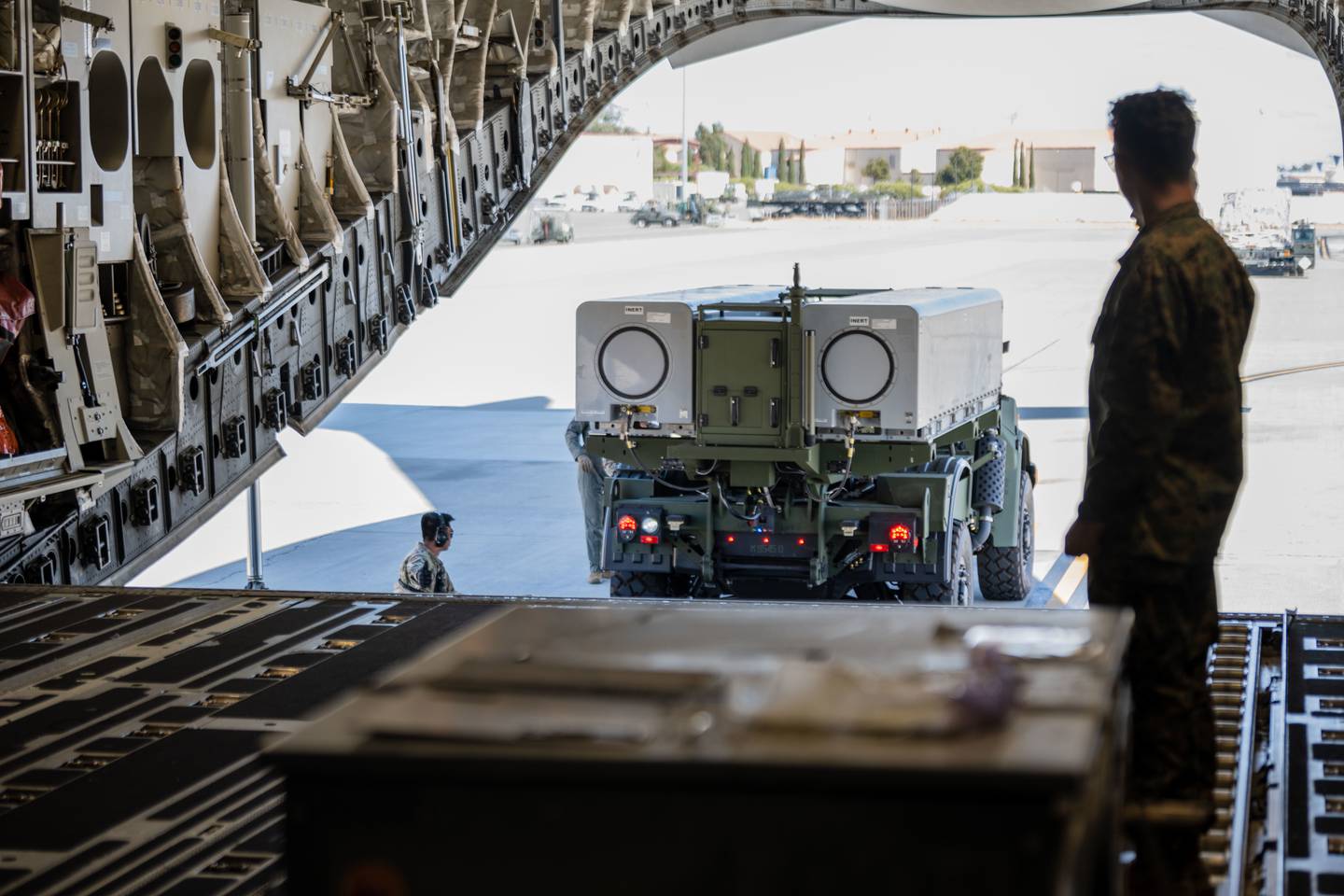The U.S. Marine Corps plans to upgrade systems it already fielded during its Force Design modernization effort, with its fiscal 2025 budget request looking to boost sensing and striking capabilities.
The FY25 request includes $4.2 billion for Marine Corps ground procurement — up slightly from the $4.0 billion request in FY24 — as well as $3 billion more for research and development across its portfolio.
Among these efforts is the move from the NMESIS — the Navy/Marine Corps Expeditionary Ship Interdiction System that transforms an unmanned Joint Light Tactical Vehicle into a remote anti-ship missile launcher — to a Long Range Fires program with even greater range.
The Corps’ original NMESIS system uses the Naval Strike Missile, with an advertised range of greater than 100 nautical miles. Service leaders have said they’d like to see that range increase tenfold — which the Corps would realize with the addition of the Long Range Fires program.
Budget documents show a pause in NMESIS procurement, with zero units included in the FY25 request, after 24 in FY24 and 97 in FY23.
A new Long Range Fires program picks up where NMESIS leaves off in the budget, with the Corps asking for eight units in FY25 and 46 across the next five years.

Marine Corps spokesman Maj. Kevin Stephensen told Defense News these two are separate but complementary ground launcher programs.
“NMESIS is based on the Naval Strike Missile and provides a small, highly deployable missile launcher. This system is being fielded to the Marine Littoral Regiments as part of Force Design and will be the primary ground launched anti-ship capability in the Marine Corps,” he said, noting the procurement in FY23 and 24 completed the Marines’ needed initial capability.
Budget documents show that, while the Corps is done buying its initial tranche of launchers, it asks for money for 90 Naval Strike Missiles to boost the inventory as it stands up additional batteries.
Looking ahead on NMESIS, Stephensen said that the Corps is testing additional capabilities in FY25 that will be incorporated into a new production baseline that will begin in FY26.
The Long Range Fires program, on the other hand, “is based on the larger Tomahawk missile and provides a longer range but less deployable and mobile system that is being fielded to the 11th Marine Regiment in Camp Pendleton,” Stephensen said.
Whereas the NMESIS will hop around theater with highly mobile small units, the larger and heavier Long Range Fires “will deploy as requested by the Combatant Commander in support of long range strike missions,” Stephensen said.
Indeed, the Corps asked for 22 Block V Tactical Tomahawk missiles in the request. Long Range Fires “will support land and future maritime strike requirements and addresses capability gaps defined in the Joint Requirements Oversight Council,” according to the budget documents.

Elsewhere in the ground procurement budget, the Corps asks for funding for its Ground/Air Task Oriented Radar. The service purchased its last radar in FY23 but continues to make improvements to the sensor that’s at the heart of its Marine Littoral Regiment formation.
Stephensen said the money would cover upgrades such as retrofitting the first three systems built during low-rate initial production from the initial gallium arsenide semiconductor to the newer gallium nitride, more resilient communications to meet Pentagon-mandated GPS M-Code and Crypto modernization requirements, kits to upgrade four radars with an extended range mode and continued software development to integrate items including Naval Integrated Fire Control and Non-Cooperative Target Recognition.
Budget documents show this G/ATOR upgrade effort will cost $51.3 million and is meant to “provide unprecedented reach, volume, and precision in the execution of Operational Maneuver from the Sea, allowing naval forces to project and sustain power deep inland,” according to the documents.

The Corps’ procurement budget also asks for $810.3 million to buy 80 Amphibious Combat Vehicle 30mm variants — which adds a cannon atop the vehicle, compared to the personnel transport variant the Marines first bought — $340.5 million for 674 Joint Light Tactical Vehicles and 340 companion trailers, and $180 million for Marine Air Defense Integrated System Increment 1 systems that deploy atop the JLTV.
The research and development budget request includes $60.2 million for the ACV program to complete prime contractor test support for the ACV-30 variant, and to continue design work and build three production readiness test vehicles for the ACV recovery variant.
Within the Navy’s aviation procurement account, the Corps requests funding for 19 of its CH-53K King Stallion heavy lift helicopters, which would kick off a two-year block buy for the helos themselves and a five-year multiyear procurement contract for the engines.
Megan Eckstein is the naval warfare reporter at Defense News. She has covered military news since 2009, with a focus on U.S. Navy and Marine Corps operations, acquisition programs and budgets. She has reported from four geographic fleets and is happiest when she’s filing stories from a ship. Megan is a University of Maryland alumna.








